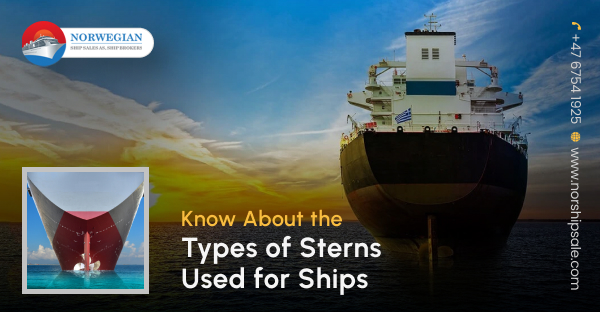Ships can have different types of sterns as aft-end structures. When a ship is designed, various factors such as construction simplicity, hydrodynamic efficiency, types of keels, hulls, bilge, and aesthetics are taken into consideration. Similarly, the suitable stern type for a ship is also selected in the same way. For ship owners, it is important to know about the different types of ship sterns used on the ship. So, to help them, in this blog, we look into the different types of ship sterns.
Now, if you are thinking of buying a good cruise ship, then you must buy the best quality ship, to find a suitable one contact a good cruise ship broker.

What Is a Ship’s Stern?
There are many parts of a ship. The ship’s stern is the end-most part of a vessel. If we speak technically, then this is the part that is built over the sternpost. It is a part that extends upwards that is from the counter to the taffrail. The stern is just situated opposite the bow, which is located at the foremost part of the ship. Also, in large ships, the ship’s engine room is found at the ship sterns. Further, in this area, on many ships, the dining room is situated as it offers a great ocean view.
A ship’s stern design is governed by some important criteria such as;
- The design of the stern should be such that it offers the least resistance
- Design should be created keeping in mind that it provides good propulsion efficiency to ensure the water flow towards the propeller stays uniform
- The design should not encourage vibrations
So, if you are someone who is considering purchasing a cruise ship, make sure that you invest in a ship that has an efficient stern. To buy such a ship, get in touch with a reliable cruise ship broker, who is also experienced.
Now, check out the different types of ship sterns.
Common Types of Ship Stern
Elliptical Stern
The elliptical stern also called the merchant stern or counter stern was the type that was used popularly for a cargo ship in the early 20th century. This type of stern when viewed from the above, the deck and knuckle line look elliptical. In this stern, the rudder is built above the waterline, and thus, the stern has an extended end part that hangs and the skeg stays exposed. The advantages of having an elliptical stern are that the ship has an expansive deck space towards the end, an aesthetic option for the owner, and most importantly it offers a measured reserve buoyancy.
Transom Stern
This is a type of stern with a flat shape that extends towards the waterline. This stern type also offers a good amount of deck space at the ship’s aft end. The transom stern has a simple construction and allows a good flow of water around the stern. This is a type of cruiser stern with a cut-off in the aft-most part.
Cruiser Stern
This stern was constructed to place the steering gear beneath the arm our deck. It has a curved upward profile that extends to the main deck from the aft-perpendicular. In the cruiser stern, the rudder is built beneath the waterline (the rudder here is under the waterline). In comparison to the elliptical stern, the cruiser stern offers better resistance. This type of stern is efficient hydrodynamically and has a better aesthetic profile.
Conclusion
So, now that we have reached the end of the blog you must have formed an idea about ship stern- its types, and important criteria that are kept in mind while designing the sterns. Therefore, if you are someone who is planning to buy a ship should keep in mind all these points, and only buy a ship with a stern that offers all the benefits that are crucial for the ship. To ensure that you buy the best cruise ship model, you should consult a cruise ship broker who is experienced and knowledgeable.

